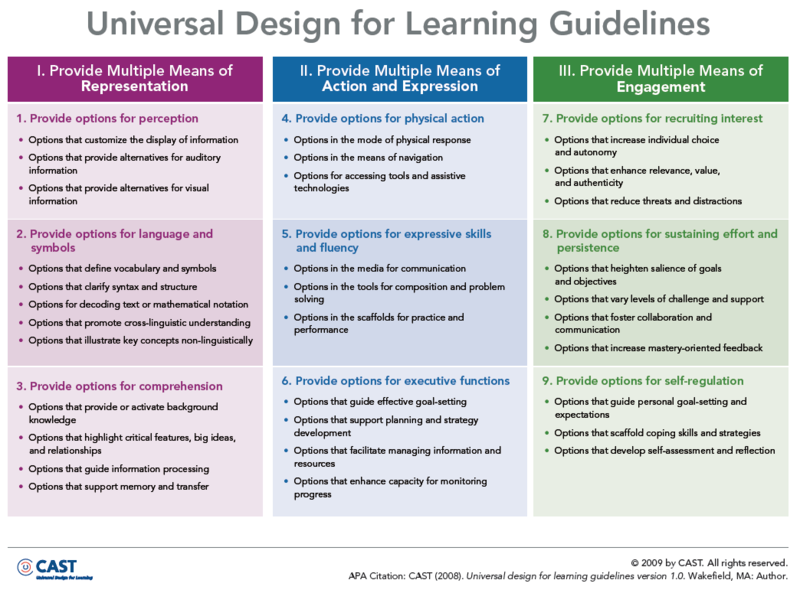Consider the cognitive affordances of the software examined: Mathletics

Mathletics is a popular web-based educational math program that is designed to support and augment mathematics concepts in a fun student-centred environment. It consists of a range of open-ended tasks which include interactive videos and tasks with multiple possible outcomes that cater to individual student’s ability. Simulations are available throughout the program to support the understanding of mathematical concepts. As Finkelstein, N.D., et al. (2005) found students who worked with simulations had a robust retrieval of the knowledge and took less time to describe their understanding. Online programs, like Mathletics, follow the Universal Design for Learning (UDL) framework (engagement, representation and action, and expression) to improve and optimize teaching and learning based on how student cognitively learn.

Engagement: The “WHY” of learning
Srinivasan, S. et al., 2006 claimed that when a student perceives themselves as competent, it entices the learner to sustain their attention. Be this may, the Mathletics program provides challenging math talks in a way that is relevant, novel and interesting. Mathletics places the student in the centre of their learning by presenting math concepts in a motivating way for students. Then, in turn, students can self-regulate, sustain the effort and concentrate to improve their learning. Ultimately, increasing students confidence. The UDL framework illustrates that need to offer choices to develop self-determination, pride in accomplishments and increase the degree to which they students connected to their learning. Again, Mathletics does an excellent job of offering students choices in the way of tasks, levels, and extrinsic rewards. Additionally, teachers have access to learning analytics to personalize the learning for individualize to allow for more students autonomy in choosing their own activities.
Representation: The “WHAT” of learning
This UDL principle is upmost of importance because it requires that learning is provided in multiple of ways. The 21st-century classroom consists of many different complexities, including students who need different ways of approaching content. For example, those with sensory disabilities (e.g., blindness or deafness); learning disabilities (e.g., dyslexia); and language or cultural differences. In fact, a teachers role is not to provide one way of representation rather giving options for representation is essential. Case in point, Mathletics online games utilize multiple modalities to support different learning styles and offers many strategies to understand math concepts. By using simulations, students can access prior knowledge and with scaffolding presentations they can assimilate new information. Furthermore, their interactive graphics, images and simulations make the information in the text more comprehensible for a learner with a disability.
Action & Expression: The “HOW” of learning
The UDL principle of action and expression is understanding that “learners differ in the ways that they can navigate a learning environment and express what they know. For example, individuals with significant movement impairments (e.g., cerebral palsy), those who struggle with strategic and organizational abilities (executive function disorders), those who have language barriers”(CAST: Home . 2018). For this reason, Mathletics provides options for action and expression. For instance, students can click on the text for text-to-speech and simulations can be repeated played over to alleviate misconceptions. Lastly, Universal Design for Learning (UDL) framework targets the importance of varying the methods of response and navigations. Similarly, Mathletics provides the learner to construct their learning at any rate, time and speed. In other words, students can take their time to master the concepts at their own pace and at any place.
CAST: Home . (2018). Cast.org. Retrieved from http://www.cast.org/?utm_source=udlguidelines&utm_medium=web&utm_campaign=none&utm_content=header
Finkelstein, N.D., Perkins, K.K., Adams, W., Kohl, P., & Podolefsky, N. (2005). When learning about the real world is better done virtually: A study of substituting computer simulations for laboratory equipment. Physics Education Research,1(1), 1-8
Srinivasan, S., Perez, L. C., Palmer,R., Brooks,D., Wilson,K., & Fowler. D. (2006). Reality versus simulation. Journal of Science Education and Technology, 15 (2), 137-141
